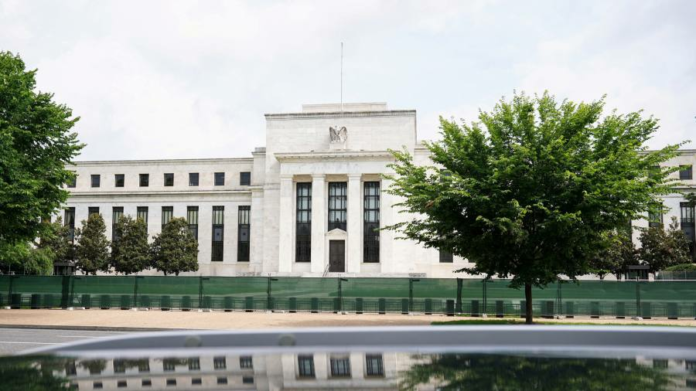For a central bank looking for signs that the worst inflation problem in decades is starting to slowly recede, Thursday’s report on US consumer price growth was about as bad as it gets.
While the annual pace was little changed at 8.2 per cent, the index showed another alarming jump on a monthly basis, suggesting underlying inflationary pressures are still accelerating. Stripping out volatile items such as food and energy, the “core” CPI measure was up 6.6 per cent compared to the same time last year.
The larger than expected increase leaves the Federal Reserve with little choice but to press ahead with a fourth consecutive 0.75 percentage point increase at its upcoming policy meeting in early November.
Economists say it is also likely to push the US central bank to continue its supersized rate rises beyond that point and at least until there is more clear-cut evidence that price pressures are easing.
“There is a persistence in inflation that if you are the Fed has got to be deeply worrying,” said Ajay Rajadhyaksha, global chair of research at Barclays. “Most people have felt like we are just about to turn, whether it be on jobs or on inflation, and it doesn’t happen and it doesn’t happen and it doesn’t happen.”
Rajadhyaksha projects the Fed will extend its string of 0.75 percentage point rate rises to the end of the year and then slow to a half-point increase at the first meeting of 2023 in early February. That suggests the federal funds rate will peak between 5 per cent to 5.25 per cent, well above the 4.6 per cent level most officials forecasted as recently as September.
The latest inflation figures come as a blow to the Biden administration, which has been dogged by Republican attacks over spiralling prices in the run-up to November’s midterm elections.
They also arrive at a tenuous moment for the global economy and financial markets, with the IMF this week warning at its annual gatherings with the World Bank that the “darkest hour” lies ahead.
Chief among their concerns is the fallout from one of the fastest global monetary tightening campaigns, which threatens to cause a US dollar funding shock and tip vulnerable emerging and developing economies further into distress.
The near implosion of parts of the UK pension industry in the aftermath of the government’s announcement of debt-funded tax cuts — which forced the Bank of England to repeatedly intervene — has also raised concerns that instability could engulf advanced economies.
In the face of these threats, some economists and investors had held out hope that the Fed would soften its plans to aggressively raise rates, as it grapples with not only global vulnerabilities but also mounting concern that its efforts to root out inflation will cause significant job losses.
“Any hope of a pivot is pretty much wiped out,” said Aneta Markowska, chief financial economist at Jefferies, adding that she also expects the Fed to deliver two more 0.75 percentage point rate rises this year before implementing a half-point increase in February. “It turns out that fixing inflation is harder than they thought and that’s why they are more concerned about getting it wrong.”
That was the message delivered in the minutes from the last policy meeting in September, when the central bank lifted its benchmark policy rate to a target range of 3 per cent to 3.25 per cent.
Many officials stressed that the costs of doing too little to rein in inflation “likely outweighed” the cost of overdoing it, the record showed, a point emphasised by chair Jay Powell when he recently acknowledged that a painful US recession cannot be ruled out.
Even the IMF has adopted that view, with the head of the multilateral lender on Thursday imploring central banks globally to take “decisive action” to contain price pressures.
“The reason we are endorsing a strong focus on inflation is because inflation has been quite stubborn and the risks of inflation expectations de-anchoring has become more visible,” Kristalina Georgieva told reporters at a briefing. “We cannot possibly allow inflation to become a runaway train.”
Fed officials appear united in their resolve to maintain an aggressive stance as long as necessary to cool the economy, and they have set a very high bar for the economic data required to change course. Rather than set policy solely based on forecasts of future inflation and the labour market, they have said they will wait for realised inflation to begin to slow before backing off.
For some economists, that all but guarantees the Fed overdoes it, given that these metrics are lagging indicators and the effects of monetary policy take time to filter across the economy. But for others, that is a risk worth taking at this stage.
“This is not only the credibility of the Fed, but it’s [Powell’s] legacy as the Fed chair,” said Diane Swonk, chief economist at KPMG. “It would be better to leave as someone who restored price stability and full employment than [leaving with] a more corrosive bout of inflation and elevated unemployment.”






